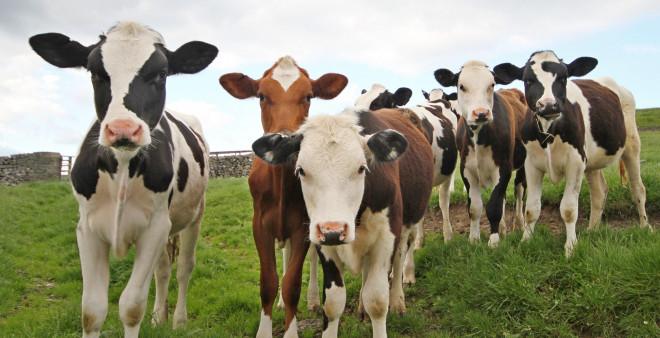The H5N1 bird flu virus is spreading among dairy cattle in the United States, and viral fragments have been detected in milk from grocery stores, according to the Food and Drug Administration (FDA). So far, however, scientists have not found active virus, and health officials say pasteurized milk is considered safe. What’s more, no unusual trends in flu-like illness have been reported to date.
At an April 24 news briefing, the FDA, the Centers for Disease Control and Prevention (CDC) and the U.S. Department of Agriculture (USDA) described their ongoing efforts to track the outbreak and ensure the safety of the milk supply.
Grateful for @CDCgov @HHS_ASPR @US_FDA @USDA brief today on #H5N1. High (non-tech) level:
— Rick Bright (@RickABright) April 24, 2024
- Ongoing human studies & epi w/ workers on farms, processing facilities
- Situation evolving in cows (cow-cow, cow-bird transmission)(asymptomatic infection)
- Federal order to require all…
H5N1 flu, also known as highly pathogenic avian influenza A, is often deadly for birds. The current global outbreak, which started in 2020, has now spread to several species of mammals, including sea lions, cats and cattle.
Avian influenza viruses normally do not infect humans, but early this month, the CDC reported that a second person in the U.S. had tested positive for the virus after exposure to dairy cattle in Texas. That individual had only mild conjunctivitis (eye inflammation), but prior data suggest that H5N1 flu may have a high fatality rate.
There have been no known cases of human-to-human transmission in the United States, though this has rarely been observed in other countries. The risk to the general public remains low, according to the CDC, but things could change as the virus evolves and mutates.
The H5N1 flu virus has been found in dairy herds in at least eight states. It is unclear whether these are linked, for example, due to the movement of cows or farm equipment. At Wednesday’s briefing, officials announced that a federal order will now require testing of cows before they can be transferred between states.
FDA and USDA officials confirmed this week that bits of viral genetic material have been detected by PCR testing in milk samples obtained from groceries. Infected cows typically experience low appetite and decreased milk production. Milk from sickly cows is discarded, but the presence of the virus in the commercial milk supply suggests that H5N1 flu is more widespread and has been circulating among cattle longer than previously thought, likely including asymptomatic animals.
The pasteurization process—heating milk to a specified temperature for a set period of time—inactivates viruses and kills bacteria. Scientists are testing for viable virus by injecting milk samples into eggs and cell cultures. So far, they have not seen any findings that suggest processed milk and milk products, such as cheese, could pose a risk for people. It is not yet known whether infectious virus is present in raw milk, but health officials warn against consumption of unpasteurized milk.
“At this time, there continues to be no concern that this circumstance poses a risk to consumer health, or that it affects the safety of the interstate commercial milk supply because products are pasteurized before entering the market,” the FDA said in a statement.
H5N1 fu vaccines exist, and studies have shown that they are safe and stimulate an immune response, but they have not been fully tested in clinical trials because human infection has been so rare. Moderna is currently testing pandemic flu vaccines based on the same messenger RNA (mRNA) technology as its COVID-19 vaccines. If safe and effective, these could likely be produced more rapidly than traditional flu vaccines, which use virus grown in chicken eggs.
Currently, the United States has around 10 million doses of the two most promising H5N1 flu vaccines in its national stockpile, STAT reports. Scaling up vaccine production and distribution to cover the entire population would be a daunting task and does not appear to be necessary at this point. Vaccinating vulnerable groups, such as dairy farm workers, would be more feasible, but such an effort could run up against the same failure to achieve global access that was seen during the early COVID-19 pandemic.







Comments
Comments